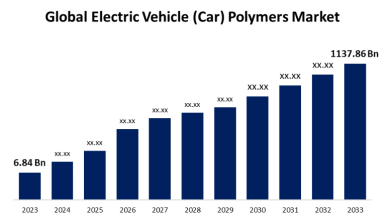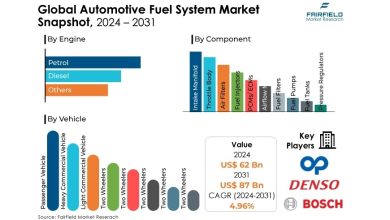Global light vehicle digital cockpit market analysis 2024-2029
DUBLIN–(BUSINESS WIRE)– ResearchAndMarkets has released a research report titled “Global Light Vehicle Digital Cockpit Market (2024 Edition)” which provides a complete analysis of the Global Light Vehicle Digital Cockpit industry in terms of market segmentation By Product Type (Infotainment, Digital Clusters, and Cockpit Domain Controller), Screen Size (Below 8 Inches, 8-10 Inches, and 11 Inches and Above), Technology Type (Analog and TFT, Semi-Digital and Digital), Vehicle Type (Passenger, and Commercial) for the historical period of 2019-2022, the estimates of 2023 and the forecast period of 2024-2029.
Global carmakers are competing to design the next-gen digital cockpits with an array of advanced features. The end-users heavily borrow these features from other associated technologies they use. The future of the cockpit is redefined since advanced safety features are getting added to the cars to achieve full autonomy.
The report analyses the Light Vehicle Digital Cockpit Market by Region (Americas, Europe, Asia Pacific, Middle East & Africa) and 10 Countries (United States, Canada, Germany, United Kingdom, France, Italy, China, Japan, South Korea, India).
The future digital cockpit would require sophisticated processing. It would need to meet the user demands for connected, safe, and advanced mobility interfaces. Rising demand for automotive cockpit electronics, autonomous vehicle technology, and ADAS is fuelling the growth of the global automotive digital cockpit market. One of the key benefits of a digital cockpit is reconfigurability. The driver has the option to select which pieces of information appear and on which display they appear. One can change entertainment settings, such as the current music track or radio station, using the instrument binnacle. This allows the driver to stay focused on the road without having to take their eyes off it.
The Digital Cockpit Controller solution facilitates the simultaneous working of Infotainment, Instrument Cluster, and ADAS functionalities real-time from a single SoC. It does so without compromising on the security or the performance requirements. It can drive multiple high-resolution displays including HuD.
Differentiating cockpit electronics has become very important for OEMs. Moreover, new connected features, intuitive HMI, entertainment on the go, and safety attract end consumers. Infotainment capabilities that connect to the internet, providing a virtual assistant and streaming media, larger and higher resolution 3D displays, all-digital instrument clusters, Augmented reality-based head-up displays and other ADAS features like surround-view, eMirror, etc. are defining the digital cockpit of today.
The cockpit domain controller architecture integrates all of these heterogeneous capabilities onto a single multi-core SoC. Moreover, ECUs are creating growth opportunities for the connected digital cockpit providers. New centralized computing approaches power this new era of mobility by consolidating separate domains in the vehicle cockpit.
Increasing demand for great digital user experience is driving the transformation from analog car dashboards. This transformation is towards a multi-screen and multimodal digital experience for drivers and passengers. Automakers are moving towards ECU consolidation to share resources, eliminate components and reduce associated costs. Moreover, ECU consolidation is an important step in the automotive industry’s transition towards the software-defined vehicle. Software-designed systems give automakers flexibility in adding new features. They also allow them to respond to emerging security threats and migrate workloads among different compute resources.
Modern cars have several digital displays in different sizes and shapes for the instrument cluster gauges and meters, infotainment, and see-through head-up displays. They also feature HVAC control panels and per seat passenger displays. Reducing driver distraction is a key attribute here through feature consolidation and smart HMI screens.
Scope of the Report
- The report analyses the Light Vehicle Digital Cockpit Market by Value (USD Million).
- The report presents the analysis of Light Vehicle Digital Cockpit Market for the historical period of 2019-2022. It also covers the estimated year 2023 and the forecast period of 2024-2029.
- The report analyzes the Light Vehicle Digital Cockpit Market by Region, including the Americas, Europe, Asia Pacific, Middle East & Africa. It also examines 10 Countries: United States, Canada, Germany, United Kingdom, France, Italy, China, Japan, South Korea, and India.
- The report analyses the Light Vehicle Digital Cockpit Market By Product Type (Infotainment, Digital Clusters, and Cockpit Domain Controller).
- The report analyses the Light Vehicle Digital Cockpit Market By Screen Size (Below 8 Inches, 8-10 Inches, and 11 Inches and Above).
- The report also analyses the Light Vehicle Digital Cockpit Market By Technology Type (Analog and TFT, Semi-Digital and Digital), Vehicle Type (Passenger, and Commercial).
- The key insights of the report have been presented through the frameworks of SWOT Analysis. Also, the attractiveness of the market has been presented by region, By Product Type, By Screen Size, By Technology Type, & By Vehicle Type.
- Also, the major opportunities, trends, drivers, and challenges of the industry has been analyzed in the report.
- The report tracks competitive developments, strategies, mergers and acquisitions and new product development.


